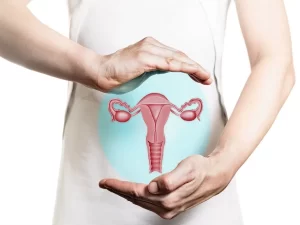
Occupancies likely to improve to 61 – 63 per cent in FY2022, from 52.5 per cent in FY2021
The first wave of COVID-19 had hit the hospitals hard, with almost all hospitals reporting losses in Q1 FY2021. Occupancies had plunged significantly, medical tourism came to a standstill, OPD visits were curtailed and electives were postponed. Nonetheless, with the easing of lockdown restrictions and decline in covid cases, the occupancies recovered subsequently and almost reached pre-covid levels by Q4 FY2021. Sequentially, the occupancy of companies in ICRA’s sample set improved from a multi-quarter low of 37 per cent in Q1 FY2021 to 53 per cent in Q2 and further to 59 per cent in Q3 and Q4 FY2021. The positive trend is likely to continue and the sector is expected to witness revenue growth of around 20-22 per cent in FY2022 along with strong profitability.
Hospitals had worked on increasing internal efficiencies and cut down on salaries and overheads, which led to sizeable cost savings and in turn supported operating margins. Some of these could partially revert to pre-covid levels; nevertheless, some of the efficiency measures are structural and are likely to be sustainable.
While in-patient procedures recovered almost completely by Q4 FY2021 (before the second wave struck), the outpatient footfalls continue to lag for most players due to a preference for digital consultations and people, in general, avoiding non-critical hospital visits due to fear of infections. Amongst the various specialities, the critical ones such as oncology and cardiology recovered faster, compared to non-critical ones such as orthopaedics. With the vaccinations picking up and the second wave tapering, the electives could rebound later in the year even as the Covid-related admissions could come down.
In terms of capex, many companies in the sector have gone slow on greenfield expansion in the last four years as the focus was on improving returns on existing facilities. However, players are now looking at adding bed capacity within the existing infrastructure, and some of the larger players are actively scouting for inorganic growth opportunities. The Government of India and the Reserve Bank of India have taken multiple measures to support the sector, including an on-tap liquidity window, dedicated ECLGS credit lines etc. which are likely to support liquidity.
In Q4-FY2021, the revenues of the companies in the sample set grew by 21 per cent on Y-o-Y basis and ~6 per cent on QoQ basis, while the operating margin expanded to 18.4 per cent vis-a-vis 17.7 per cent in Q3 FY2021 and 13.9 per cent in Q4 FY2020.
“The occupancy is likely to improve in FY2022 to 61-63 per cent and revenues are expected to grow by ~20-22 per cent while the incremental borrowings by hospitals are likely to remain limited owing to the healthy cash generation and strong liquidity. Further, the interest coverage ratio is projected to rise to ~4.7x (from 2.6x in FY2021) and Net debt/EBITDA is expected to improve to 1.36x in FY2022 (from 1.6x in FY2021),” Banga added.
The long-term outlook for the industry continues to remain Stable, given the increasing life expectancy, a rising share of elderly people, rising incidence of non-communicable lifestyle diseases, higher healthcare awareness, growing per capita spend, increasing penetration of health insurance and robust medical tourism volumes.
Mythri Macherla, Assistant Vice President and Sector Head, ICRA said, “In Q4 FY2021, the companies in the sample set reported multi-quarter high operating margins of 18.4 per cent and this elevated exit rate of profitability is likely to be the harbinger for strong profitability in FY2022. Overall, ICRA expects at least a 200 bps improvement in profitability in FY2022 though the margins are expected to moderate from the level seen in Q4 FY2021 due to the normalisation of some of the cost-cutting measures and higher proportion of COVID-19 treatment. Further, the restrictions on treatment charges for COVID-19 patients in certain states could keep the margins in check.”
Kapil Banga, Assistant VP and Sector Head, ICRA, adds, “Higher contribution from the complicated elective case and severe cases supported the average revenue per occupied bed (ARPOB) growth in Q4 FY2021. The ARPOB of the companies in the sample set grew by a healthy 9 per cent on Y-o-Y basis and ~6 per cent on a QoQ basis. The average length of stay (ALOS) for COVID-19 patients tends to be higher than the electives, which has significantly increased in FY2021 to 4.17 days from 3.57 days in FY2020, though the same started reverting to the pre-Covid levels in Q4 FY2021, when it improved to 4.10 days, compared to 4.4 days in the preceding two quarters.”






